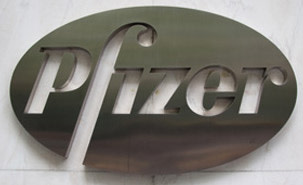Pfizer’s first-quarter revenue fell 8% to $13.7bn, missing market expectations of $13.9bn. The decline was primarily driven by a decline in Paxlovid sales for COVID, which more than offset gains in its Vyndaqel family of medicines used to help treat heart failure.
Operating profit fell 19% to $2.8bn, largely due to the decline in revenue and some restructuring charges.
Full-year guidance has been maintained, but this “does not currently include any potential impact related to future tariffs”. Full-year revenue expected to land between $61.0-$64.0bn, and underlying earnings per share (EPS) is expected to be between $2.80-$3.00.
No share buybacks are currently planned for 2025.
The shares were broadly flat in pre-market trading.
Our view
Pfizer had a weak start to 2025, with revenue falling short of market expectations, largely due to a sharp drop in sales of some COVID medicines. Pfizer’s not yet managed to diversify sufficiently to mitigate the influence of this volatile revenue stream. Guidance for the full year has been maintained for now, but this doesn’t factor in the potential impact of future tariffs, so there could be some disappointment as the year progresses.
Turning to the wider portfolio, there’s plenty of potential clinical catalysts in 2025 including a handful of new product approvals. But as with all drug development, there remains significant execution risk. There’s also some scepticism around Pfizer’s efforts to enter the lucrative anti-obesity market.
Further wins in the clinic will also be needed to mitigate the so-called patent cliff. Between 2026 and 2028, the company will lose exclusivity over several key products, which account for around $17.5bn of revenue.
Pfizer's banking on its ambitious research program to make a big impact on revenue by the end of the decade. While Pfizer's R&D hit rate is higher than most, even regulatory approval doesn’t guarantee commercial success, with factors such as patient uptake also being factored into the equation.
Another risk is legislative action on drug pricing. One of Pfizer's biggest sellers, the blood thinner Eliquis, was one of the first drugs to be subject to price negotiations with the US Department of Health following new legislation. Its maximum price has been slashed to under half of the suggested retail price, and many of Pfizer’s other drugs are now suffering a similar fate.
The acquisition of Seagen saw net debt skyrocket to around $59bn at the last count. That’s forecast to fall to around 2.4x cash profit by the end of this year, so it’s not too terrifying. But if there are any negative earnings surprises, the 7.4% prospective dividend yield could come under pressure. Of course, no payouts are assured.
The deal doubles the size of Pfizer’s development pipeline in cancer, with focus shifting to novel medicines. Pfizer thinks it can more than quadruple Seagen’s revenues to over $10bn by 2030, but that's not without the usual risks of drug development. It will be a while yet before we find out if the hefty premium paid has been worth it.
Pfizer has a strong record of commercialising blockbuster therapies, and there’s some solid progress being made. At 7.8 times forward earnings, it's trading at a significant discount to the sector. For that gap to close, investors need convincing that the company can reduce its reliance on COVID-related sales and pull harder on growth levers as exclusivity on certain products disappears.
Environmental, social and governance (ESG) risk
Product governance is a primary driver of ESG risk for this sector, with safety and marketing of medicines the key focus. Access to medicines and their affordability, as well as business ethics concerning intellectual property rights, ethical clinical research and price collusion are other topical issues. Labour relations and Bribery and Corruption are also material ESG risks.
According to Sustainalytics Pfizer’s overall management of material ESG issues is strong.
Board-level oversight is in place and there are adequate policies and programmes on bribery, corruption and whistleblowing. Implementation could be an issue, though, given it’s being investigated by the SEC and Department of Justice regarding bribery allegations. Pfizer was recognised by the Access to Medicine Index for its value-based healthcare initiatives, but disclosure of list and net price changes in the US has deteriorated over the past few years. The group’s transparent with its trial data, but falls short of best practice in other areas of product governance.
The Share Research team is ceasing covering of Pfizer. This is the last update and house view HL will produce on this stock. You can still find out more about our thoughts on the Financials industry by signing up to our Share Insight email.
Pfizer key facts
All ratios are sourced from LSEG Datastream, based on previous day’s closing values. Please remember yields are variable and not a reliable indicator of future income. Keep in mind key figures shouldn’t be looked at on their own – it’s important to understand the big picture.
This article is not advice or a recommendation to buy, sell or hold any investment.No view is given on the present or future value or price of any investment, and investors should form their own view on any proposed investment.This article has not been prepared in accordance with legal requirements designed to promote the independence of investment research and is considered a marketing communication.Non - independent research is not subject to FCA rules prohibiting dealing ahead of research, however HL has put controls in place(including dealing restrictions, physical and information barriers) to manage potential conflicts of interest presented by such dealing.Please see our full non - independent research disclosure for more information.


